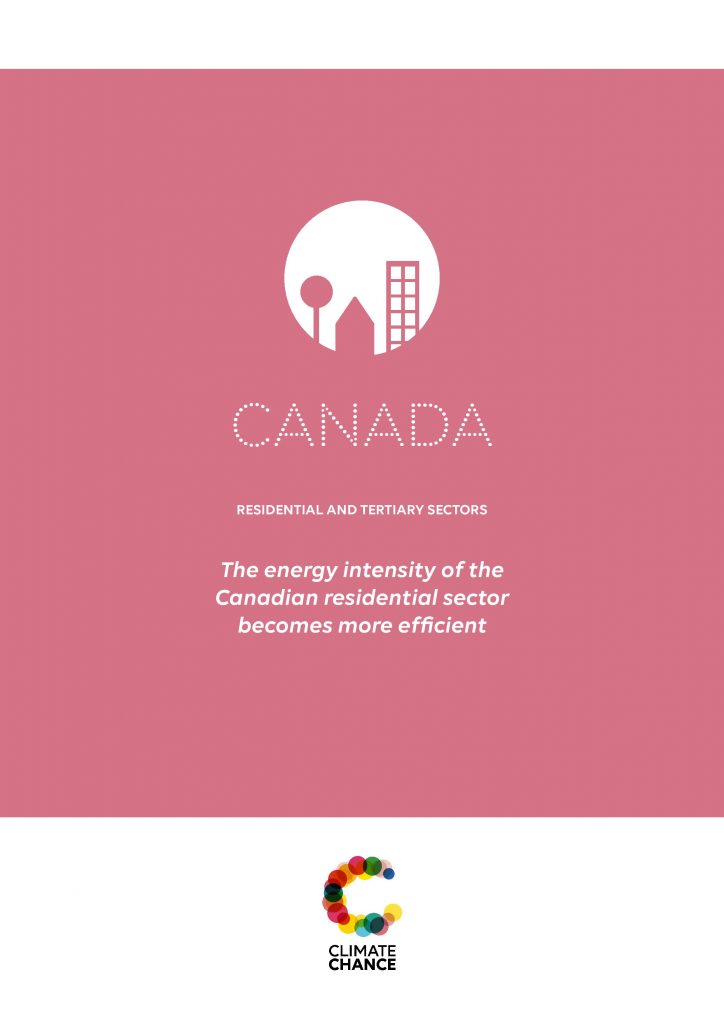Canada • The energy intensity of the residential sector becomes more efficient
Canada is located in latitudes where climate change is particularly felt, however in 2016, its greenhouse gas (GHG) emissions in the residential sector decreased despite an increase in energy consumption.

2018
Canada
Guillaume Simonet • Consultant and independant researcher, Abstraction Services
Introduction
Canada is located in latitudes where climate change is particularly felt, however in 2016, its greenhouse gas (GHG) emissions in the residential sector decreased despite an increase in energy consumption. This improvement in the carbon intensity of the energies used makes it possible to compensate for the residential choices of a growing population. It is largely due to the dynamic normative framework of Natural Resources Canada encouraging non-state actors to develop more
efficient products and buildings across the country. Beyond certifications and several incentive programmes, local initiatives – most often carried out in partnership between actors – also play a dynamic role in this trend, which should increase in the coming years.
Contents
1 • Canada’s residential sector: lower emmissions and increased energy consumption
• Population growth and energy efficiency, the main influencing factors
• Correlation with the annual weather conditions
• Consumption influenced by heating rooms and water
• Continuous reduction of energy intensity
2 • An effective normative framework for energy efficiency
• The impetus of incentive programmes
3 • Measures at provincial and city level
• The Pan-Canadian Framework, symbol of a multiple partnership
• Local dynamism led by cities and NGOs
4 • Improving energy efficiency by transforming the market
• Relying on the normative tool
to transform the market
• The impetus of incentive programmes
Conclusion
Thanks to the dynamic partnerships between the various players in the expanding sustainable building sector who take action to advance both the legislation and technical innovation, GHG emissions in Canada’s residential sector in recent years are falling despite the increase in the total energy consumption of a growing population with growing energy requirements. Local initiatives for zero-emission residential buildings, although still not encompassing more than a small number of all buildings, are nevertheless expanding. The continuous improvement in the energy efficiency of building standards, heating appliances and household appliances plays a major role in this decrease, as well as the changing weather conditions, given the country’s northern location. In view of these dynamics, the evolution of GHG emissions in the Canadian residential sector will have to be carefully monitored in the coming years by analysing the share that can be contributed to these measures and the share contributable to global warming.



